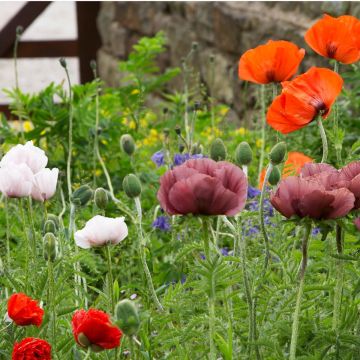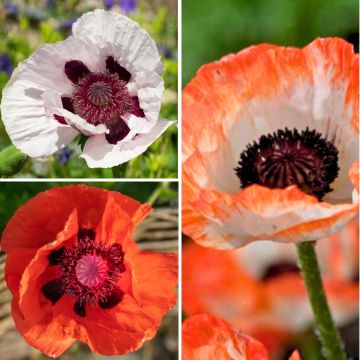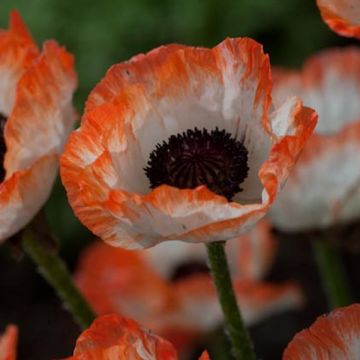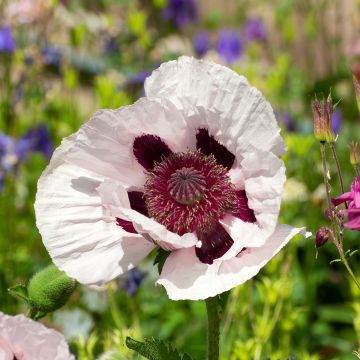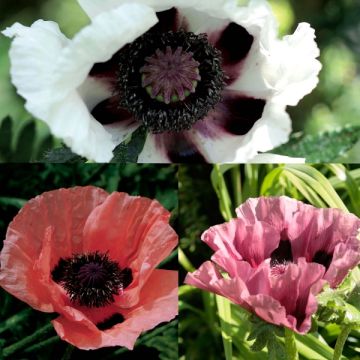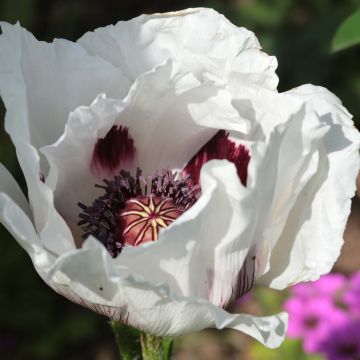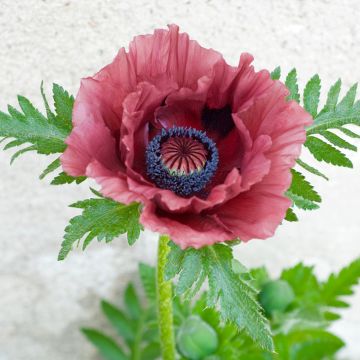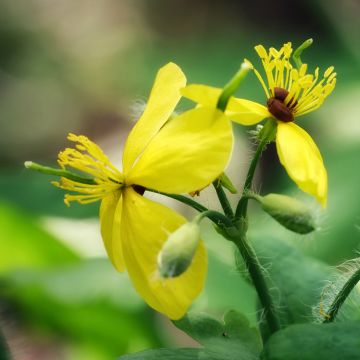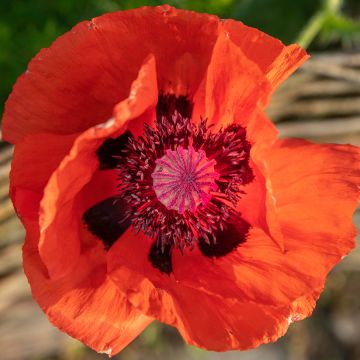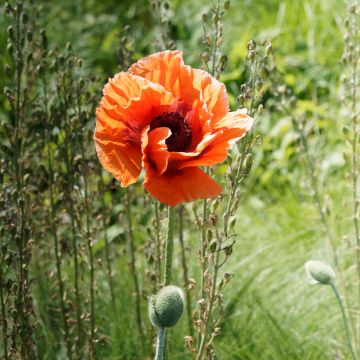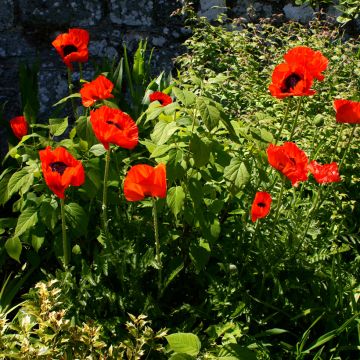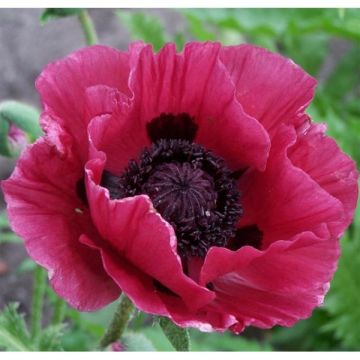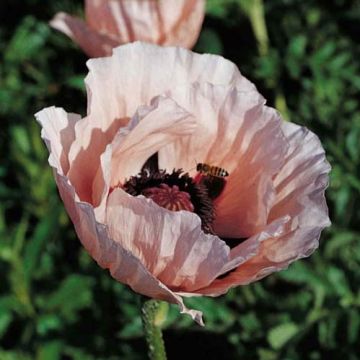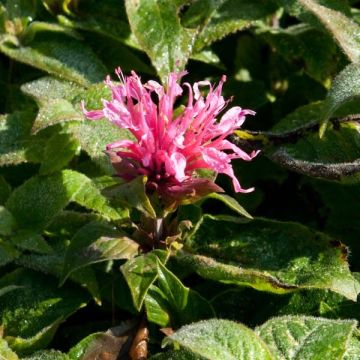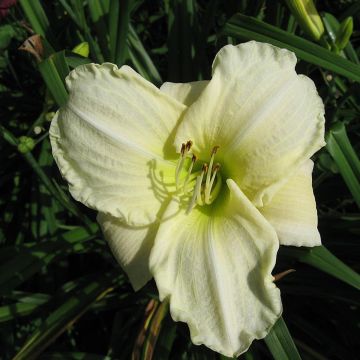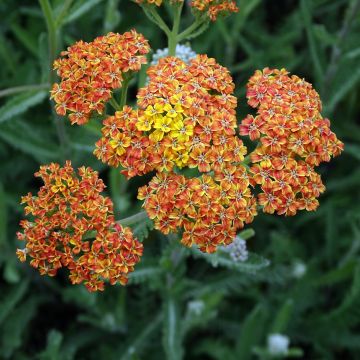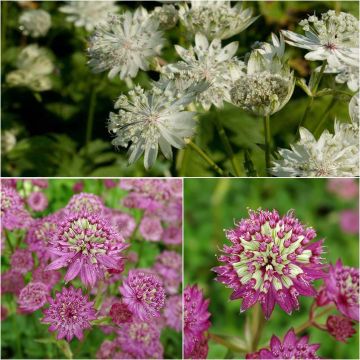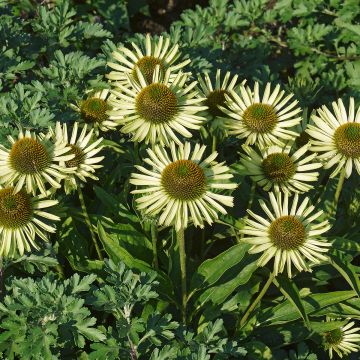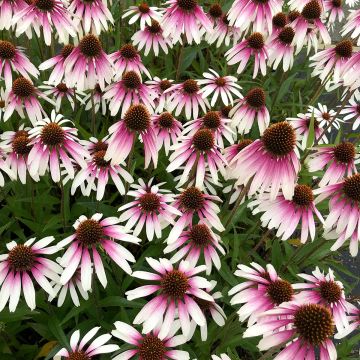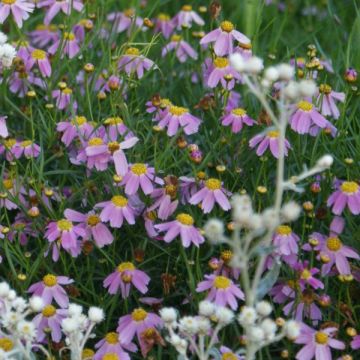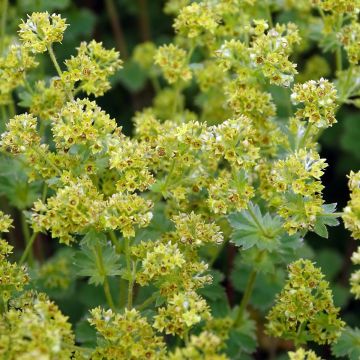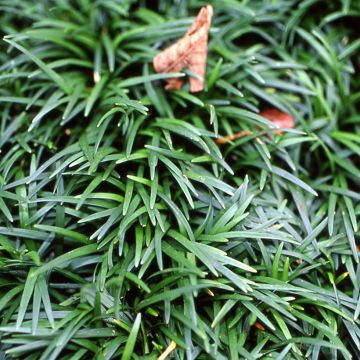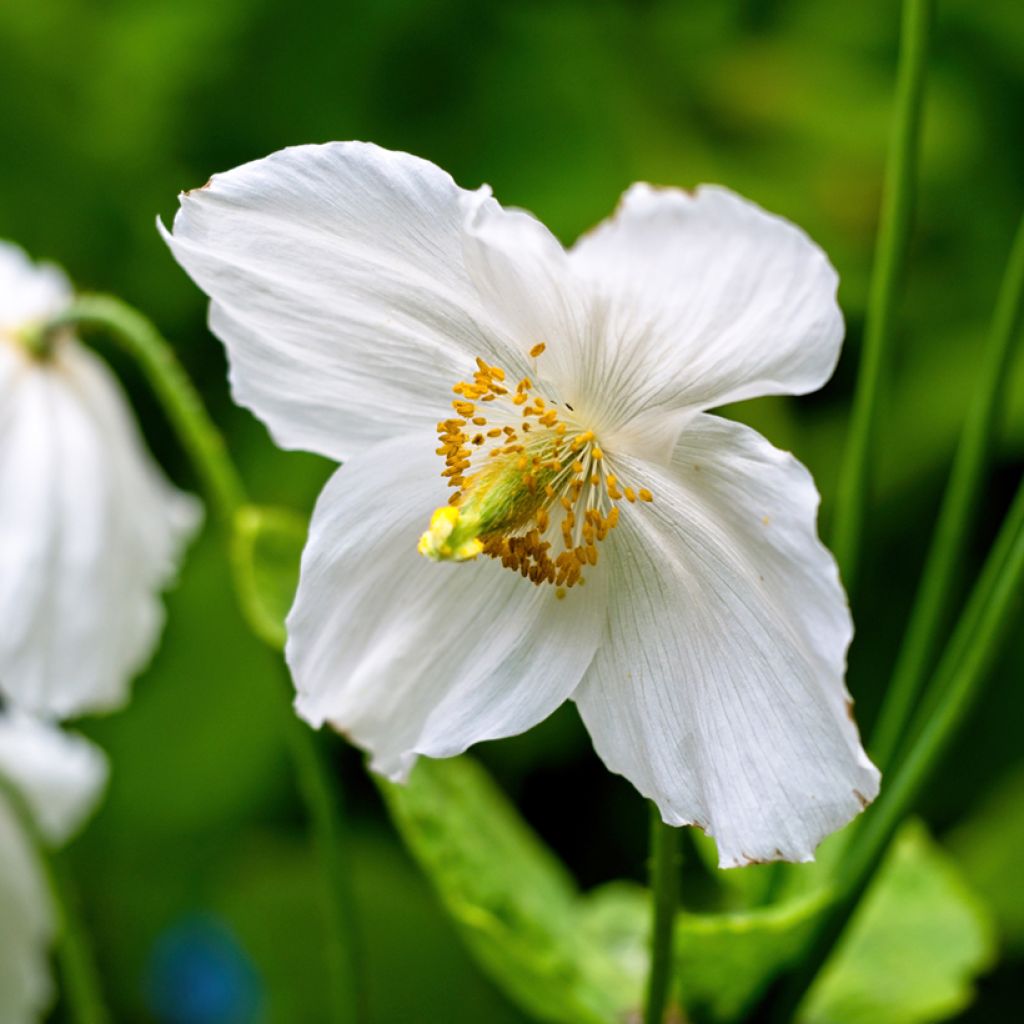

Meconopsis betonicifolia var. alba - Blue Poppy
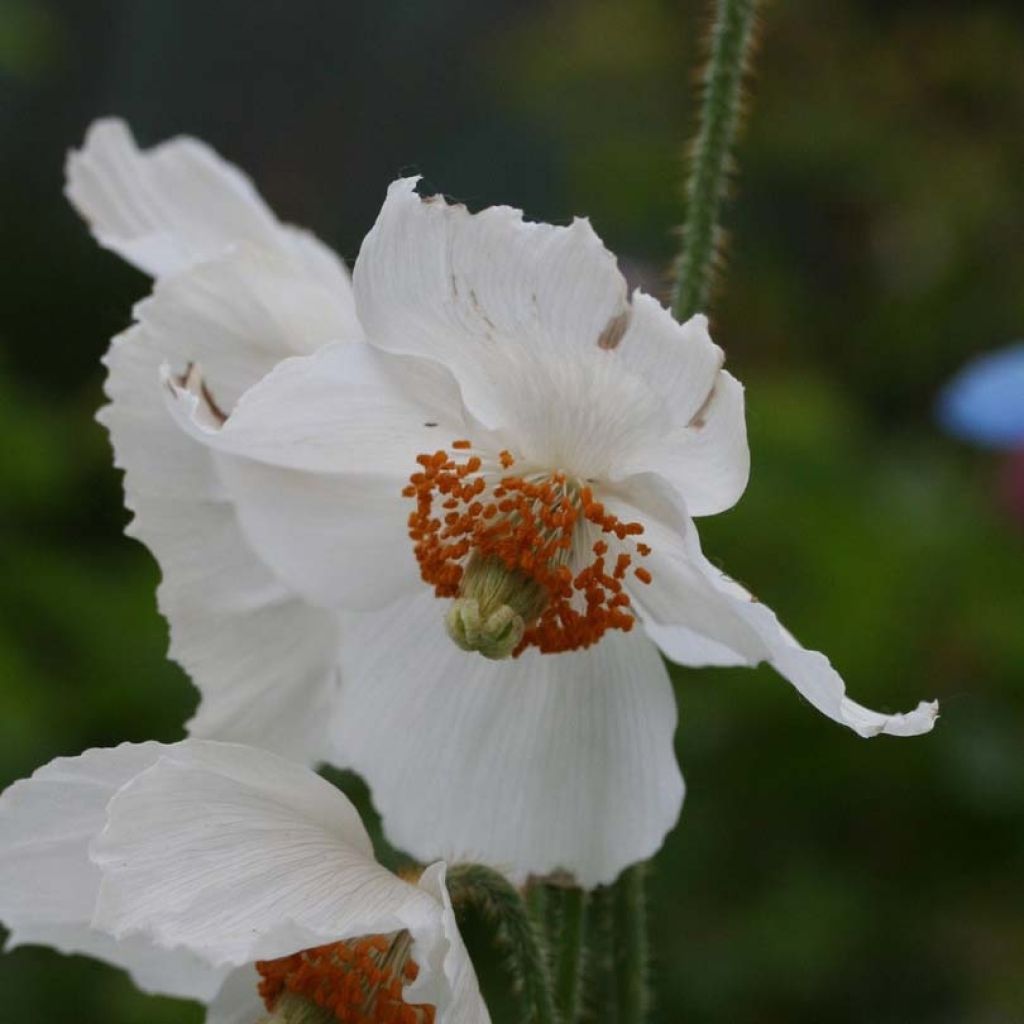

Meconopsis betonicifolia var. alba - Blue Poppy
Meconopsis betonicifolia var. alba - Blue Poppy
Meconopsis betonicifolia Alba
Blue Poppy, Himalayan blue Poppy
The plant did not take.
F Hassan, 17/04/2024
Why not try an alternative variety in stock?
View all →This plant carries a 12 months recovery warranty
More information
We guarantee the quality of our plants for a full growing cycle, and will replace at our expense any plant that fails to recover under normal climatic and planting conditions.
From €5.90 for pickup delivery and €6.90 for home delivery
Express home delivery from €8.90.
Does this plant fit my garden?
Set up your Plantfit profile →
Description
Meconopsis betonicifolia var. alba, also known as the Himalayan Blue Poppy with white flowers, is a rare form of this mythical plant that collectors are clamouring for. With great purity, the sublime flowers of this perennial have a pure white colour with silky reflections, warmed by a bouquet of golden stamens. They are borne on elegant and sturdy stems, well above a light green downy foliage. This Alba variety is a gift from nature, a treasure that deserves to be cultivated in humus-rich and moist soil, in the shelter of an understorey or a wall, in filtered light.
Originally from the Yarlung Zangbo Gorges in southeastern Tibet, the Blue Poppy grows at an altitude of 3000 to 4000 metres (9842 to 13123 feet); in nature, it is already a plant that must be earned! It grows in more or less shaded and humid places, in rather neutral, humus-rich, and deep soil. Capricious, it can wither overnight for no apparent reason.
The alba variant is a rare form that is faithfully propagated by sowing. It is a hardy perennial plant with rapid growth, whose above-ground vegetation develops in spring and disappears in winter. The plant shows a rosette habit from which flowering stems measuring 90cm (35in) to 1m (3ft) emerge. The basal rosette with a diameter of 40 to 50cm (16 to 20in) is composed of cordate and ovate leaves, fairly light green in colour, hairy, and long-petiolate. The more or less branched flowering stems bear several flowers measuring 8 to 10cm (3 to 4in) in diameter, with a slightly translucent and silky texture, white in colour. Their golden centre consists of an ovary with a short stem of bulb surrounded by a collar of yellow-orange stamens. The flowering is followed by the formation of brown capsules filled with small black spherical seeds.
Often difficult to maintain in our gardens, the 'alba' Blue Poppy is nevertheless perennial, hardy, and prolific. To increase your chances of success, look for and find the coldest spot in your garden, at the foot of an east or north-facing wall, in well-drained and loose soil, where it is at the edge of an understorey exposed to morning sun. Plant it in large masses, give it space, and let nature take its course. Meconopsis betonicifolia and its varieties seem to be the easiest to grow in climates that are hotter and drier in summer than its country of origin. It should be kept in mind that this plant experiences the summer monsoon in Tibet and is covered in snow in winter. For example, associate it with Japanese ferns, Japanese herbs, or small Fortune's saxifrages, which appreciate the same environments.
Report an error about the product description
Meconopsis betonicifolia var. alba - Blue Poppy in pictures
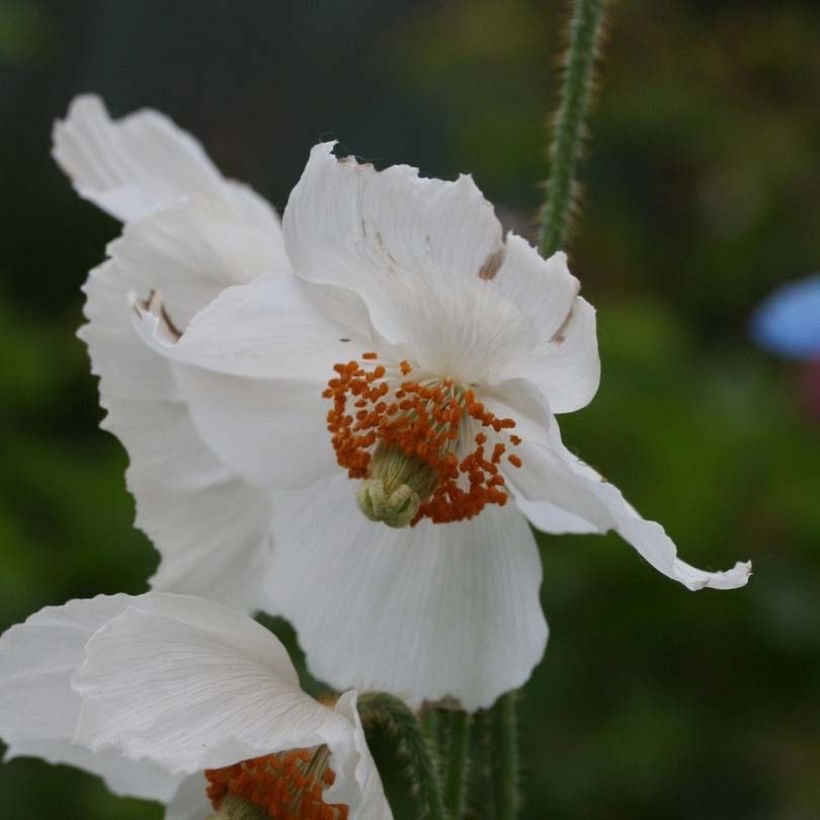

Flowering
Foliage
Plant habit
Botanical data
Meconopsis
betonicifolia
Alba
Papaveraceae
Blue Poppy, Himalayan blue Poppy
Himalayas
Other Papaver - Poppies
Planting and care
The 'alba' Himalayan blue poppy is difficult to cultivate. It is recommended for green thumbs, in cool regions, in shaded areas, on soil that remains moist even in summer, but well-drained to prevent root rot even in winter. The soil should be acidic to neutral, meaning it should be devoid of limestone. Plant in a mixture of soil and turf, in moist, neutral or acidic soil. The flowering in the first year is often reduced, and it is advised to cut the flower stalks before flowering in the first spring to strengthen the plant. Conservation over several years can sometimes be delicate.
Planting period
Intended location
Care
-
, onOrder confirmed
Reply from on Promesse de fleurs
Summer flowering perennials
Haven't found what you were looking for?
Hardiness is the lowest winter temperature a plant can endure without suffering serious damage or even dying. However, hardiness is affected by location (a sheltered area, such as a patio), protection (winter cover) and soil type (hardiness is improved by well-drained soil).

Photo Sharing Terms & Conditions
In order to encourage gardeners to interact and share their experiences, Promesse de fleurs offers various media enabling content to be uploaded onto its Site - in particular via the ‘Photo sharing’ module.
The User agrees to refrain from:
- Posting any content that is illegal, prejudicial, insulting, racist, inciteful to hatred, revisionist, contrary to public decency, that infringes on privacy or on the privacy rights of third parties, in particular the publicity rights of persons and goods, intellectual property rights, or the right to privacy.
- Submitting content on behalf of a third party;
- Impersonate the identity of a third party and/or publish any personal information about a third party;
In general, the User undertakes to refrain from any unethical behaviour.
All Content (in particular text, comments, files, images, photos, videos, creative works, etc.), which may be subject to property or intellectual property rights, image or other private rights, shall remain the property of the User, subject to the limited rights granted by the terms of the licence granted by Promesse de fleurs as stated below. Users are at liberty to publish or not to publish such Content on the Site, notably via the ‘Photo Sharing’ facility, and accept that this Content shall be made public and freely accessible, notably on the Internet.
Users further acknowledge, undertake to have ,and guarantee that they hold all necessary rights and permissions to publish such material on the Site, in particular with regard to the legislation in force pertaining to any privacy, property, intellectual property, image, or contractual rights, or rights of any other nature. By publishing such Content on the Site, Users acknowledge accepting full liability as publishers of the Content within the meaning of the law, and grant Promesse de fleurs, free of charge, an inclusive, worldwide licence for the said Content for the entire duration of its publication, including all reproduction, representation, up/downloading, displaying, performing, transmission, and storage rights.
Users also grant permission for their name to be linked to the Content and accept that this link may not always be made available.
By engaging in posting material, Users consent to their Content becoming automatically accessible on the Internet, in particular on other sites and/or blogs and/or web pages of the Promesse de fleurs site, including in particular social pages and the Promesse de fleurs catalogue.
Users may secure the removal of entrusted content free of charge by issuing a simple request via our contact form.
The flowering period indicated on our website applies to countries and regions located in USDA zone 8 (France, the United Kingdom, Ireland, the Netherlands, etc.)
It will vary according to where you live:
- In zones 9 to 10 (Italy, Spain, Greece, etc.), flowering will occur about 2 to 4 weeks earlier.
- In zones 6 to 7 (Germany, Poland, Slovenia, and lower mountainous regions), flowering will be delayed by 2 to 3 weeks.
- In zone 5 (Central Europe, Scandinavia), blooming will be delayed by 3 to 5 weeks.
In temperate climates, pruning of spring-flowering shrubs (forsythia, spireas, etc.) should be done just after flowering.
Pruning of summer-flowering shrubs (Indian Lilac, Perovskia, etc.) can be done in winter or spring.
In cold regions as well as with frost-sensitive plants, avoid pruning too early when severe frosts may still occur.
The planting period indicated on our website applies to countries and regions located in USDA zone 8 (France, United Kingdom, Ireland, Netherlands).
It will vary according to where you live:
- In Mediterranean zones (Marseille, Madrid, Milan, etc.), autumn and winter are the best planting periods.
- In continental zones (Strasbourg, Munich, Vienna, etc.), delay planting by 2 to 3 weeks in spring and bring it forward by 2 to 4 weeks in autumn.
- In mountainous regions (the Alps, Pyrenees, Carpathians, etc.), it is best to plant in late spring (May-June) or late summer (August-September).
The harvesting period indicated on our website applies to countries and regions in USDA zone 8 (France, England, Ireland, the Netherlands).
In colder areas (Scandinavia, Poland, Austria...) fruit and vegetable harvests are likely to be delayed by 3-4 weeks.
In warmer areas (Italy, Spain, Greece, etc.), harvesting will probably take place earlier, depending on weather conditions.
The sowing periods indicated on our website apply to countries and regions within USDA Zone 8 (France, UK, Ireland, Netherlands).
In colder areas (Scandinavia, Poland, Austria...), delay any outdoor sowing by 3-4 weeks, or sow under glass.
In warmer climes (Italy, Spain, Greece, etc.), bring outdoor sowing forward by a few weeks.

































